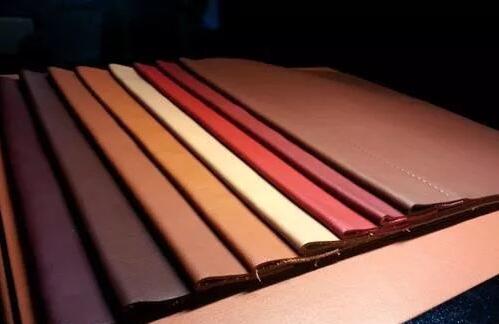18 Years Professional Experience In Leather Belt Manufacturing
Up-To- Date Design, High-Quality Production & On-Time Delivery
Own Factories in China & Cambodia
Views: 5 Author: Site Editor Publish Time: 2024-06-28 Origin: Site
Leather has been prized for centuries for its durability, versatility, and natural beauty. Understanding the various types of leather and their qualities is essential for consumers and suppliers alike to make informed decisions. This guide aims to provide a comprehensive overview of leather grades, factors affecting quality, and tips for selecting the right leather for different applications.
The four primary grades of leather are:
1. Full-Grain Leather: The highest quality, known for its durability and natural appearance.
2. Top-Grain Leather: Slightly lower quality than full-grain, with some surface treatment.
3. Genuine Leather: A misleading term, often misunderstood as high-quality.
4. Bonded Leather: Made from leftover leather scraps, bonded together with adhesive.

Full-grain leather is made from the outermost layer of the hide, which includes all of the natural grain. It is renowned for its strength, durability, and the ability to develop a rich patina over time. This leather retains the natural marks and imperfections of the hide, which adds to its character and aesthetic appeal.
· Durability: Extreme and resistant to wear.
· Aging: Develops a unique patina, enhancing its look over time.
· Natural Marks: Retains the original grain, showing natural imperfections and beauty.

Top-grain leather is also made from the top layer of the hide, but it undergoes a sanding process to remove imperfections. This gives it a more uniform appearance but slightly reduces its strength and ability to develop a patina.
· Processing: Sanded and sometimes treated to remove natural marks.
· Appearance: Smoother and more uniform than full-grain.
· Durability: Still very durable but less so than full-grain.
· Patina: Patina develops less richly than a whole grain.

The term "genuine leather" is often misunderstood. While it implies authenticity, it does not necessarily indicate high quality. Genuine leather is made from the remaining layers of the hide after the top layers have been removed.
· Quality: Lower quality than full-grain and top-grain.
· Construction: Often made from split leather, which is the bottom part of the hide.
· Products: Commonly used in cheaper leather goods.

Bonded leather is made from leather scraps and fibres that are bonded together with polyurethane or latex on a fibre mesh. It is the lowest quality leather, often used in budget products.
· Composition: Made from leftover leather scraps and fibres.
· Durability: Less durable and prone to peeling and cracking.
· Usage: Common in low-cost furniture and accessories.

Several factors determine the quality of leather:
1. Animal Source: The type of animal and its living conditions.
2. Tanning Methods: Processes like vegetable tanning or chrome tanning.
3. Finishing Techniques: Surface treatments that enhance appearance and durability.
· Animal Source: Cattle, sheep, goats, and exotic animals each produce different qualities of leather.
· Tanning Methods:
o Vegetable Tanning: Eco-friendly, produces a firmer leather.
o Chrome Tanning: Faster and cheaper, it produces a softer leather.
· Finishing Techniques:
o Aniline Finish: Minimal treatment, retains a natural look.
o Semi-Aniline: Light protective coating, retains natural characteristics.
o Pigmented: Heavy coating for a uniform appearance, less natural look.
Identifying high-quality leather involves several sensory checks:
1. Visual Cues: Look for natural marks and a consistent grain pattern.
2. Tactile Cues: Feel for suppleness and a natural texture.
3. Olfactory Cues: Smell for a rich, earthy scent characteristic of genuine leather.
· Visual Inspection: Check for natural imperfections and a consistent grain.
· Touch Test: High-quality leather should feel soft and supple, not plasticky.
· Smell Test: Genuine leather has a distinct, pleasant smell, unlike synthetic materials.
Faux leather, also known as synthetic leather, is made from plastic materials designed to mimic the look and feel of genuine leather.
· PU Leather: Polyurethane-based, more flexible and breathable.
· PVC Leather: Polyvinyl chloride-based, more durable and waterproof.
· Pros:
o Cost-Effective: Generally cheaper than genuine leather.
o Variety: Available in a wide range of colours and textures.
o Animal-Friendly: No animals are harmed in production.
· Cons:
o Durability: Less durable than genuine leather.
o Environmental Impact: Production involves harmful chemicals.
o Feel: Often needs the more natural feel of genuine leather.
Choosing the right leather depends on the intended use:
· Furniture: Full-grain or top-grain for durability and aesthetic.
· Clothing: Top-grain for a balance of softness and strength.
· Accessories: Genuine leather for cost-effective, everyday items.
· Budget Options: Bonded leather or faux leather for affordability.
· Furniture: Opt for full-grain or top-grain for high-traffic areas.
· Clothing: Look for top-grain for comfort and durability.
· Accessories: Genuine leather offers a balance of quality and price.
· Budget: Consider bonded or faux leather for cost-saving.
Understanding the various grades and types of leather is crucial for making informed purchasing decisions. From the highest quality full-grain leather to the budget-friendly bonded leather, each type serves different needs and applications. By recognizing the factors that influence leather quality and knowing how to identify high-quality leather, consumers and suppliers can ensure they select the best leather for their specific requirements.
1. Cleaning: Use a damp cloth and mild soap for regular cleaning.
2. Conditioning: Apply a leather conditioner every 6-12 months to keep it supple.
3. Protection: Keep leather away from direct sunlight and heat sources to prevent drying and cracking.
4. Storage: Store leather items in a cool, dry place, ideally in breathable fabric covers.